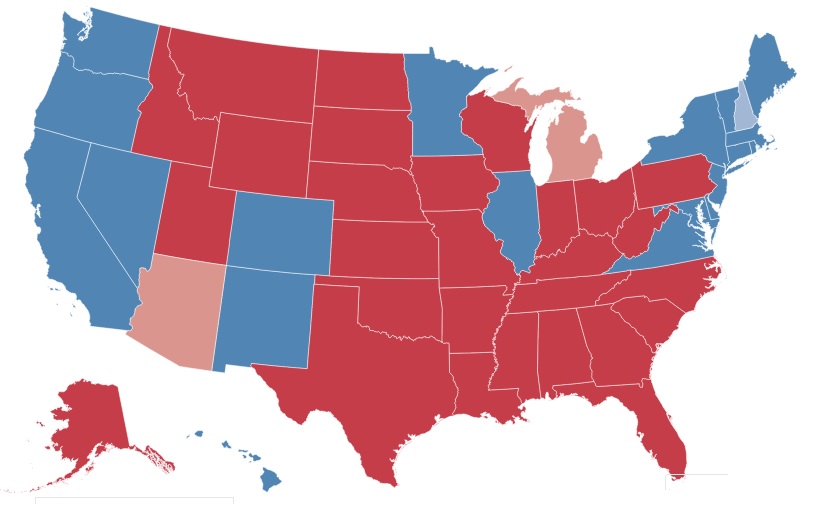Inaccurate polls shows a failure in journalism
Donald Trump’s surprising presidential victory leaves room for reporting growth
More stories from Brian Sheridan
News outlets everywhere are shocked, to say the least.
All across the nation we saw the polls. New York Times’ last national poll had Hillary Clinton winning 45.9 percent to Donald Trump’s 42.8 percent. Almost every news organization had Clinton winning; Bloomberg had it, Fox News had it, ABC News, Washington Post, CBS…
Yet here we are.
Coming from Wisconsin — a state that has voted Democrat for the last 30 years prior to last night — as well as a student on a liberal arts campus, Clinton’s win seemed like the only possible outcome.
However, that assumption was wrong. Democrats in Wisconsin were wrong, national polls were wrong and media as a whole was wrong. That fact that this happened shows just how out of touch with the American populace and blinded media was in this election of all the true and completely realistic support Trump had across the nation.
As the editor-in-chief of The Spectator, this is not an opinion piece showing favor for either candidate. However, as a student who is passionate about journalism and who cares deeply about accurate, unbiased reporting, I feel it’s my duty to point out the failure of the news industry as a whole this election season.
A lot of it has to do with emotion, something that can’t be represented in numbers. This has been an election that has brought out more feelings than we have ever seen and a large portion of the mistakes journalists made were not listening well enough to what the people were really saying.
Voter turnout was predicted to be a record year in America, topping Barack Obama’s record 2008 election of 132.6 million voters, which made up 62.2 percent of the country at the time. But, as with most predictions this season, it was wildly underestimated with around 128.8 million votes—55.6 percent of eligible voters, according to the US Elections Project.
This can be contributed to the infuriation of the two nominated candidates. With email scandals and inflammatory statements alike, many Americans seem to have felt it was better to stay home, which appears to have made a positive outcome for Trump.
News outlets knew exactly how vitriol this election was going to be but didn’t seem to understand how Americans were going to act. They weren’t listening well enough to significant demographics that allowed Trump to win the presidency.
A New York Times article quoted John King from CNN Tuesday night saying “We were not having a reality-based conversation” in regards to their coverage in the prior couple weeks. If news outlets are not having conversations based in this reality, then they have failed at delivering news.
Another problem is likely the interpretation of data. As with most national polls that were presented before the election, you take them with a grain of salt as they are meant to be a “snapshot” of the polls at that time.
However, multiple news sites such as New York Times and CBS never had Trump winning, ever. Even in their snapshots, Clinton always had the edge and it assured journalists she was going to win, and likely by a landslide.
After this election, perhaps it’s time to revisit how polling is done in America. According to Marketplace’s article on polling, more people are refusing to participate in them. With a potential rise in unlisted cell phones, bias at the polls or poor national focus, it’s clear how they were executed and used by journalists was wrong.
When Trump talks about a growing distrust in modern media and how polls were against him, this is what he was talking about. Something needs to be changed before we have an entire nation viewing journalists as being corrupt entities in political pockets.
We must remember to be strong, to be dogged in our search for the truth and to never give up. The Spectator will always strive for excellence and I hope the rest of the media in the nation will join us in our endeavor.


